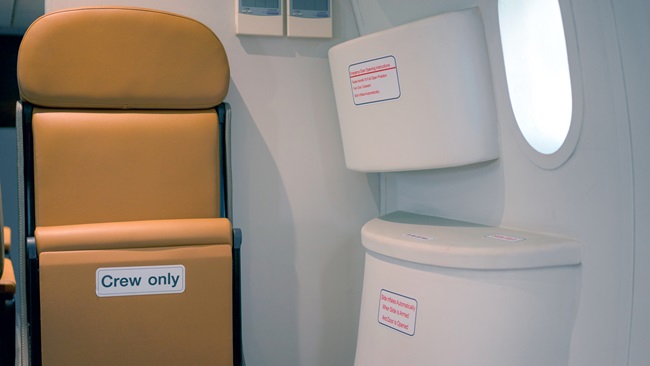President's Position: Broader horizons
There is room for everyone
As we’ve all seen, the topic of diversity and inclusion has taken center stage in the United States. And I have to admit that when I take a look around at airshows, conventions, and fly-ins, I can’t help but notice it’s a lot like looking in a mirror. Aviation could use a little more diversity—not just in ethnicity, but in age and gender. Aviation should reflect society as much as possible. If we don’t find ways to attract a broader range of professionals to enter our field, we are doomed for complacency, and, to quote my flight instructor—we’ll keep getting what we’re getting.
Roughly 7.8 billion people make up the world’s population, and of that massive number, a very small percentage of us can call ourselves pilots. But when broken down by ethnicity and gender, the disparity is pronounced. According to the U.S. Bureau of Labor Statistics, nearly 94 percent of pilots and flight engineers are white, fewer than 3 percent are Black, and 2 percent are Hispanic. A mere 7 percent are women. We should find ways to be more inclusive and welcome everyone to join this passion of ours.
With all the turbulence we’ve hit this year, many may be of the mindset that it’s a bad time to get into the industry. However, I don’t doubt for a minute we will bounce back. We already are. Aviation is a rewarding industry, not just for pilots but also for maintenance professionals, engineers, and anyone interested in pursuing STEM fields. There is room for many.
If we don’t find ways to attract a broader range of professionals to enter our field, we are doomed for complacency, and, to quote my flight instructor—we’ll keep getting what we’re getting.While there have been barriers to aviation for more than a century, that hasn’t stopped historical greats such as Amelia Earhart, Bessie Coleman, and the honorable Tuskegee Airmen. How do we add to their legacy through today’s workforce? The key is to knock down obstacles and show females, minorities, and everyone that there are no limits, even in the skies.
Numerous studies have shown that teens tend to naturally prefer role models they see as like themselves. Plenty of organizations such as Women in Aviation International, Sisters of the Skies, and the Organization of Black Aerospace Professionals are working to diversify the industry and introducing new audiences to the aviation world. The nonprofit group Fly for the Culture, a “driving force in the effort to expand diversity within the aviation industry,” takes young people on tours of airport facilities, aircraft manufacturers, and maintenance facilities (“Pilots: Courtland Savage,” February 2020 AOPA Pilot). Savage’s group also offers courses on student pilot fundamentals and teaches concepts such as aerodynamics, checklist philosophy, and the flight training process. We need to help these organizations take the lead and help aviation expand.
Even major airlines are vowing to make changes within their ranks. Alaska has partnered with Sisters of the Skies to welcome more minority women, while Delta has co-sponsored OBAP in an effort to create summer youth programs to increase diversity in the aviation profession.
Likewise, AOPA’s You Can Fly Program is all about lowering barriers. One facet of You Can Fly is the four-year aviation STEM curriculum, which AOPA is offering free to high schools around the country to spark an interest in aviation and aerospace career opportunities. Last year, there were more than 5,000 students enrolled in the program, including 38 percent from minority backgrounds, while girls made up 23 percent. Many of these schools are in underserved areas where students may never have been exposed to the possibility of aviation as a viable career path.
For several decades we’ve been able to protect and defend our freedom to fly because we’ve never lost sight of the goal—ensuring that aviation will thrive for generations to come. Encouraging new voices and diverse audiences to join us will only help our passion thrive and broaden our own horizons. Our future depends on it.
Email [email protected]



